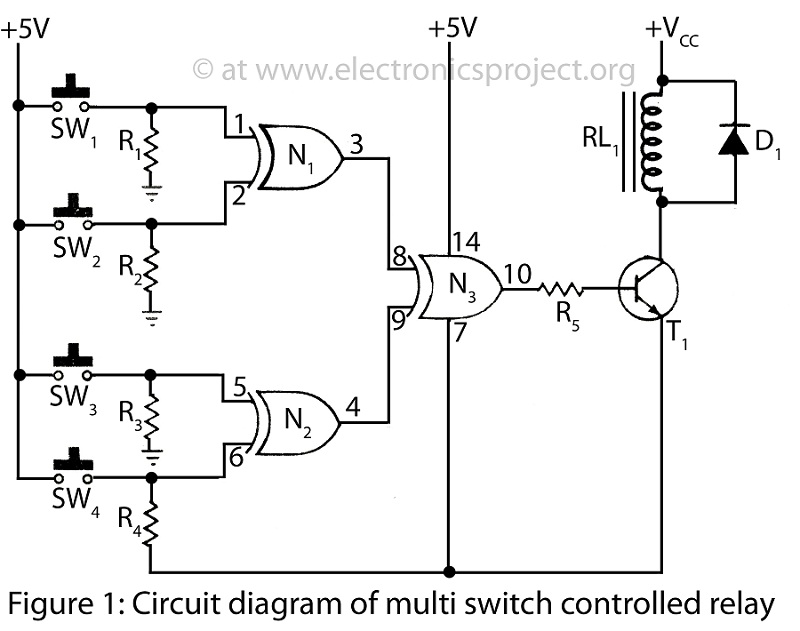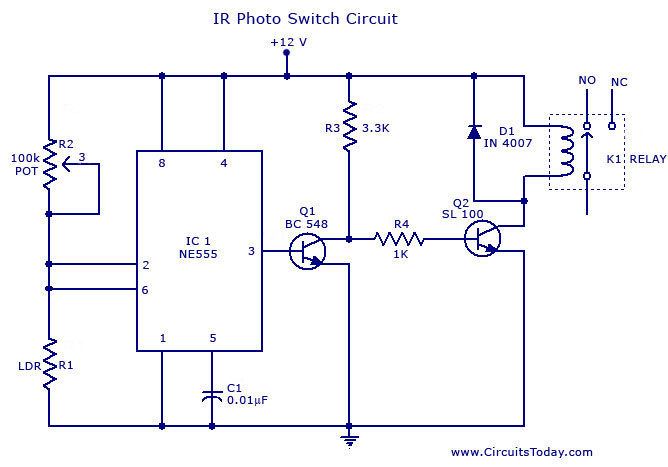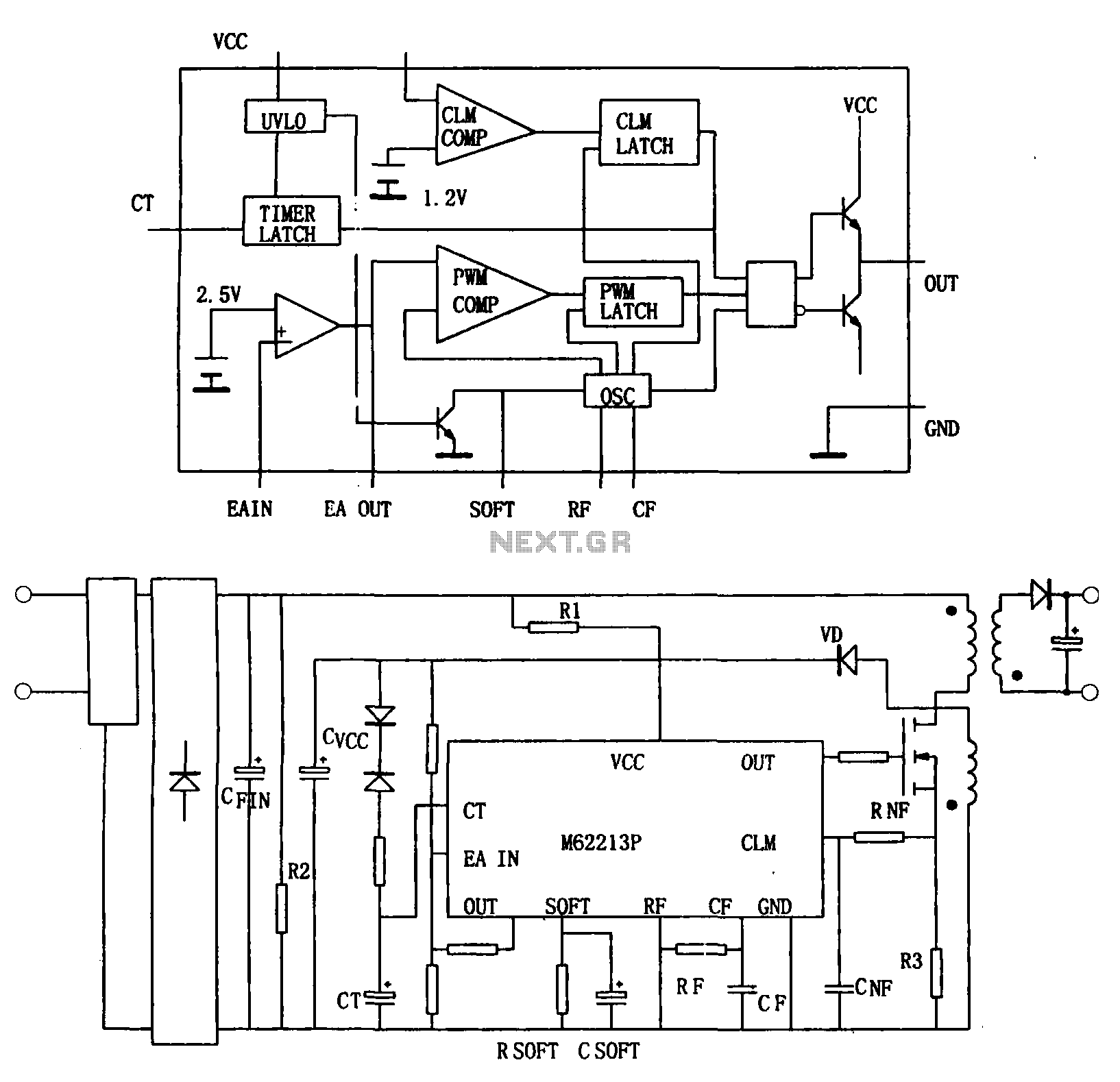
Clap Triggered Switch

This is a circuit of a Clap Triggered Switch. When the circuit detects a tap, a short whistle, or a clap, it will toggle the LEDs. Resistors of 33k and 5.6k are used to charge the circuit.
The Clap Triggered Switch circuit is designed to respond to sound stimuli, specifically the sound of a clap or similar sharp noise. The core component of this circuit is a microphone, which acts as a sound sensor. Upon detecting the sound, the microphone converts the acoustic energy into an electrical signal.
The circuit typically includes an operational amplifier (op-amp) configured as a comparator to amplify the signal from the microphone. The output of the op-amp is connected to a trigger mechanism, which can be a flip-flop or a microcontroller, depending on the complexity desired. The use of resistors, such as the mentioned 33kΩ and 5.6kΩ, is crucial for setting the gain of the op-amp and establishing the time constants for charging and discharging the capacitors in the circuit.
When the sound is detected, the output of the op-amp changes state, which in turn toggles the flip-flop or microcontroller. This action can drive a transistor or relay, allowing for the control of higher power devices, such as LEDs or other loads. The LEDs will toggle their state, turning on if they were previously off and vice versa.
To ensure reliable operation, the circuit may include additional components such as capacitors for noise filtering and diodes for protection against voltage spikes. The design may also incorporate a potentiometer to adjust the sensitivity of the microphone, allowing the user to fine-tune the response to different sound levels.
Overall, the Clap Triggered Switch circuit is a practical application of sound detection technology, suitable for various uses, including lighting control and interactive installations.This is circuit of Clap Triggered Switch. When the circuit detects tap, or short whistle or a clap, this circuit will toggle the LEDs. 33k and 5K6 charge The. 🔗 External reference
The Clap Triggered Switch circuit is designed to respond to sound stimuli, specifically the sound of a clap or similar sharp noise. The core component of this circuit is a microphone, which acts as a sound sensor. Upon detecting the sound, the microphone converts the acoustic energy into an electrical signal.
The circuit typically includes an operational amplifier (op-amp) configured as a comparator to amplify the signal from the microphone. The output of the op-amp is connected to a trigger mechanism, which can be a flip-flop or a microcontroller, depending on the complexity desired. The use of resistors, such as the mentioned 33kΩ and 5.6kΩ, is crucial for setting the gain of the op-amp and establishing the time constants for charging and discharging the capacitors in the circuit.
When the sound is detected, the output of the op-amp changes state, which in turn toggles the flip-flop or microcontroller. This action can drive a transistor or relay, allowing for the control of higher power devices, such as LEDs or other loads. The LEDs will toggle their state, turning on if they were previously off and vice versa.
To ensure reliable operation, the circuit may include additional components such as capacitors for noise filtering and diodes for protection against voltage spikes. The design may also incorporate a potentiometer to adjust the sensitivity of the microphone, allowing the user to fine-tune the response to different sound levels.
Overall, the Clap Triggered Switch circuit is a practical application of sound detection technology, suitable for various uses, including lighting control and interactive installations.This is circuit of Clap Triggered Switch. When the circuit detects tap, or short whistle or a clap, this circuit will toggle the LEDs. 33k and 5K6 charge The. 🔗 External reference





